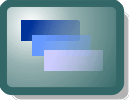LINKS
Cabling
Numbers Layout
Layout of Telephone Numbers
Recommendations for the printing of national and international forms of telephone numbers on letterheads bills, business cards, etc are set out in the ITU-T Recommendation E.123 Notation for national and international telephone numbers, e-mail addresses and Web addresses.
The reader is referred to the Recommendation for the detail but the main points are:
-
the national and international forms of a telephone number should be shown separately, and labelled appropriately
-
the national number should be shown vertically above the international number, with corresponding digits lining-up
-
the international prefix symbol, +, should prefix all representations of an international telephone number
-
the parentheses symbol, ( ), should be used to indicate digits that are not always dialled in a national number. This symbol should not be used in the international form of the number
-
spaces should be used to group digits although the use of other symbols, such as a hyphen, is permissible in the national form of a number. Spaces only should be used in the international form.
Examples for two geographic UK telephone numbers and two non-geographic UK numbers are provided here:
| Telephone | National | (020) 7946 0946 |
| International | +44 20 7946 0946 | |
| Telephone | National | (01632) 960960 |
| International | +44 1632 960960 | |
| Telephone | National | 07700 900900 |
| International | +44 7700 900900 | |
| Telephone | National | 03069 990990 |
| International | +44 3069 990990 |
It follows that the following commonly seen representations of UK telephone numbers...
+44 (0) 1632 960960
+44 (01632) 960960
...do not align with the Recommendation.
Page updated 06/08/2013
